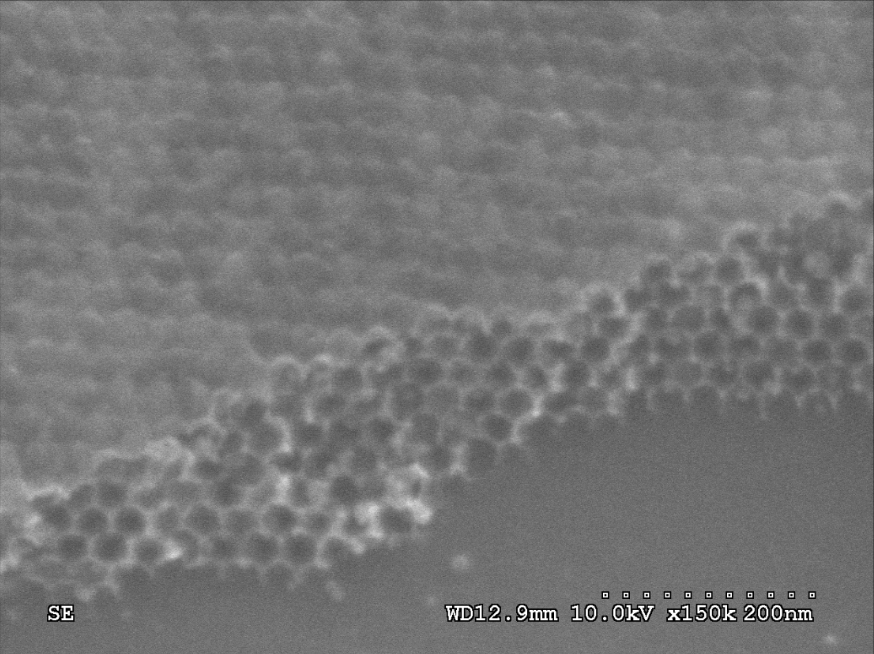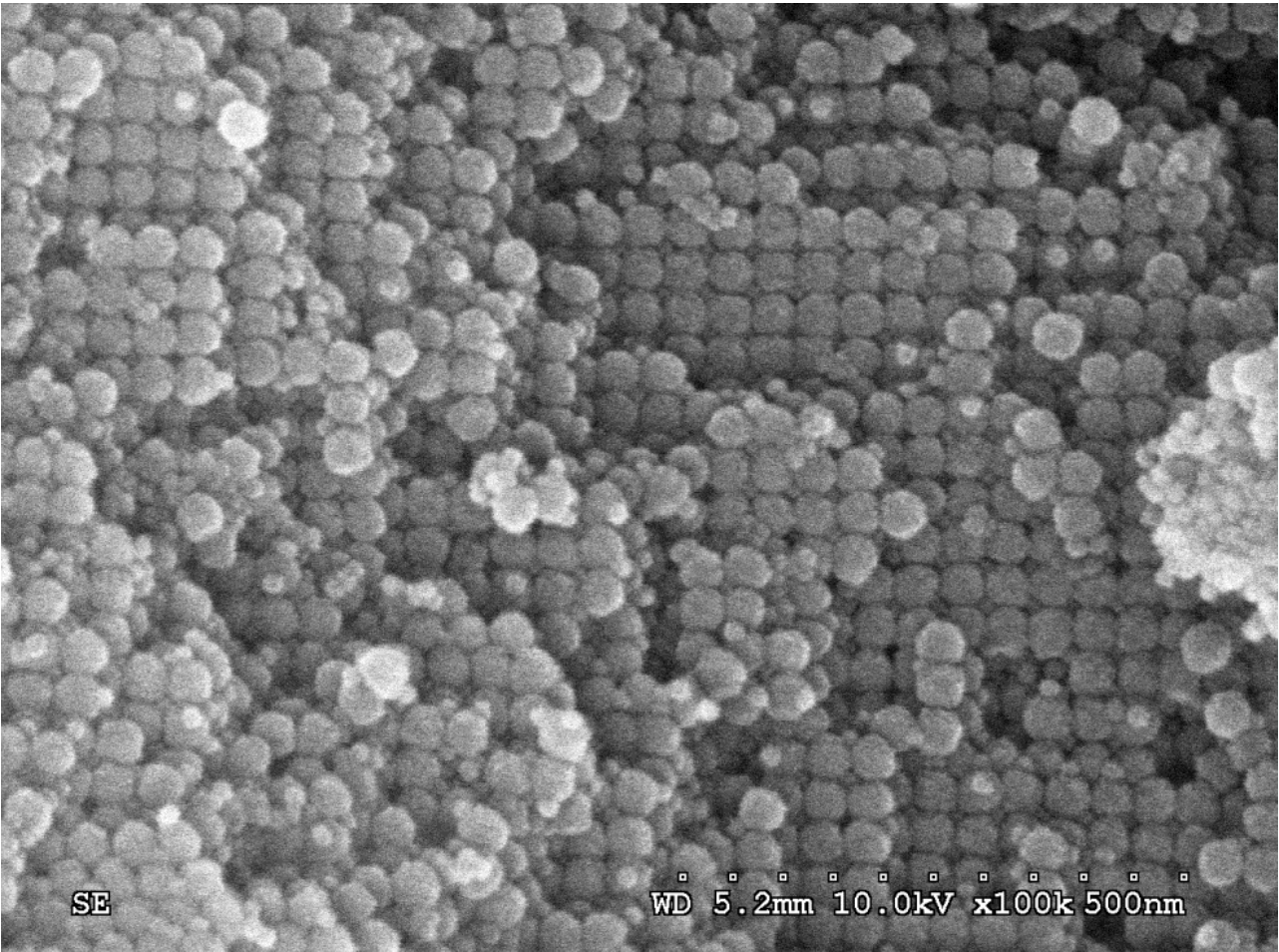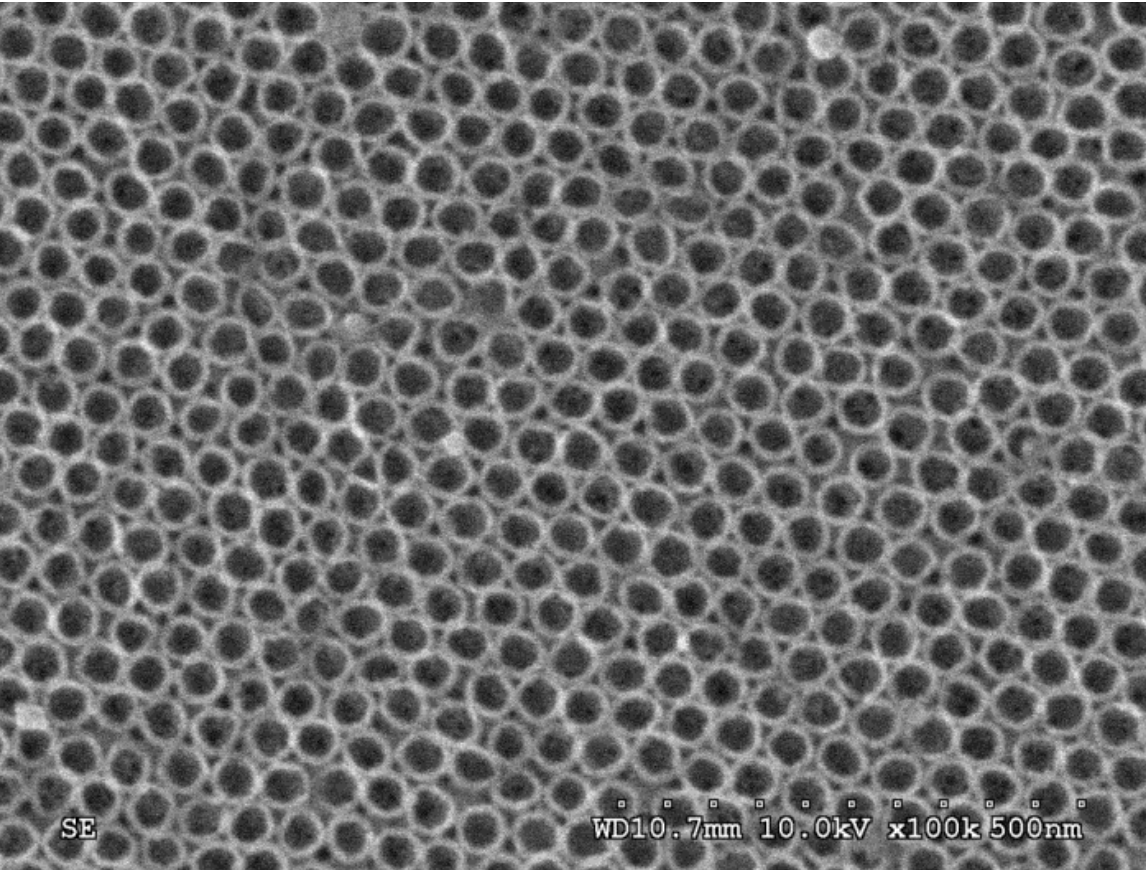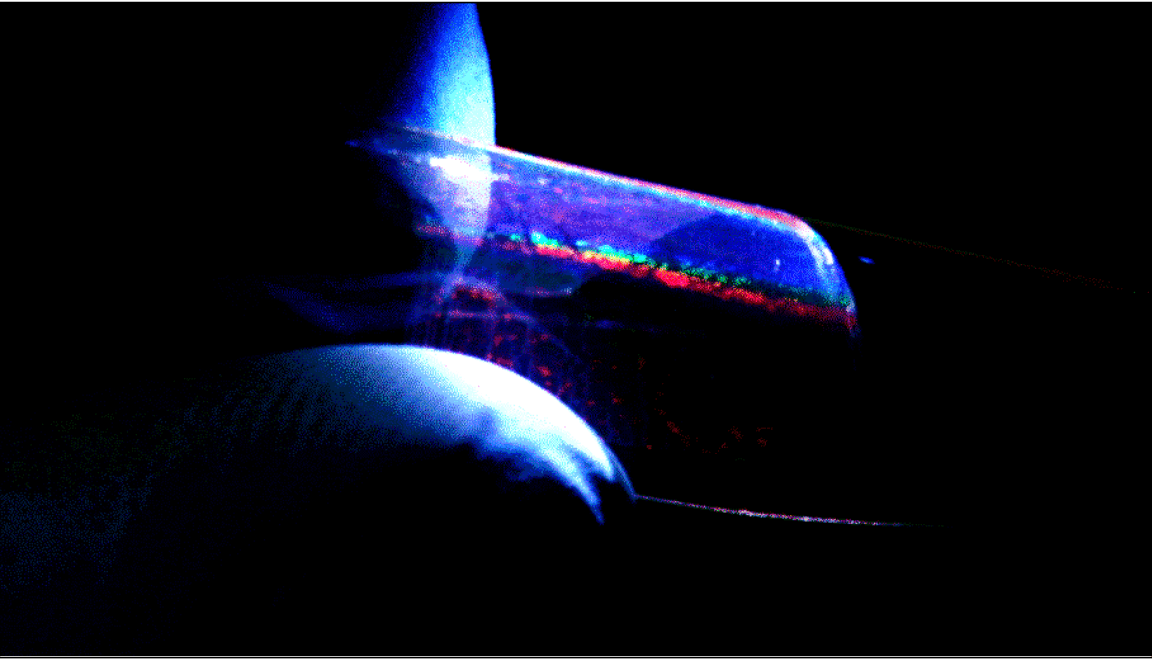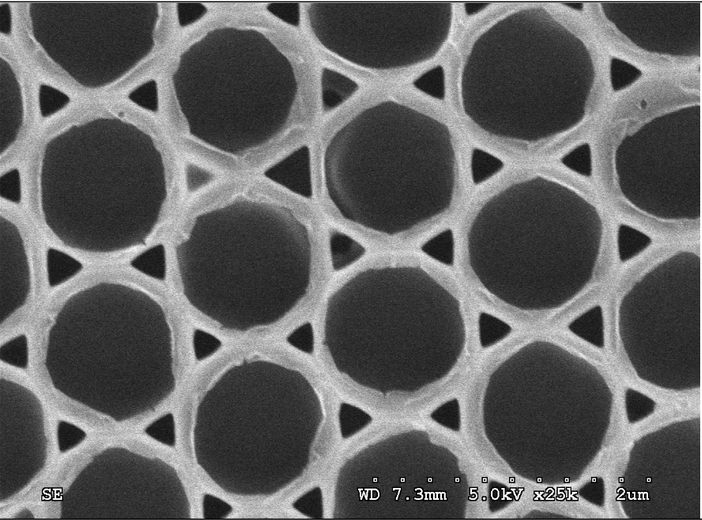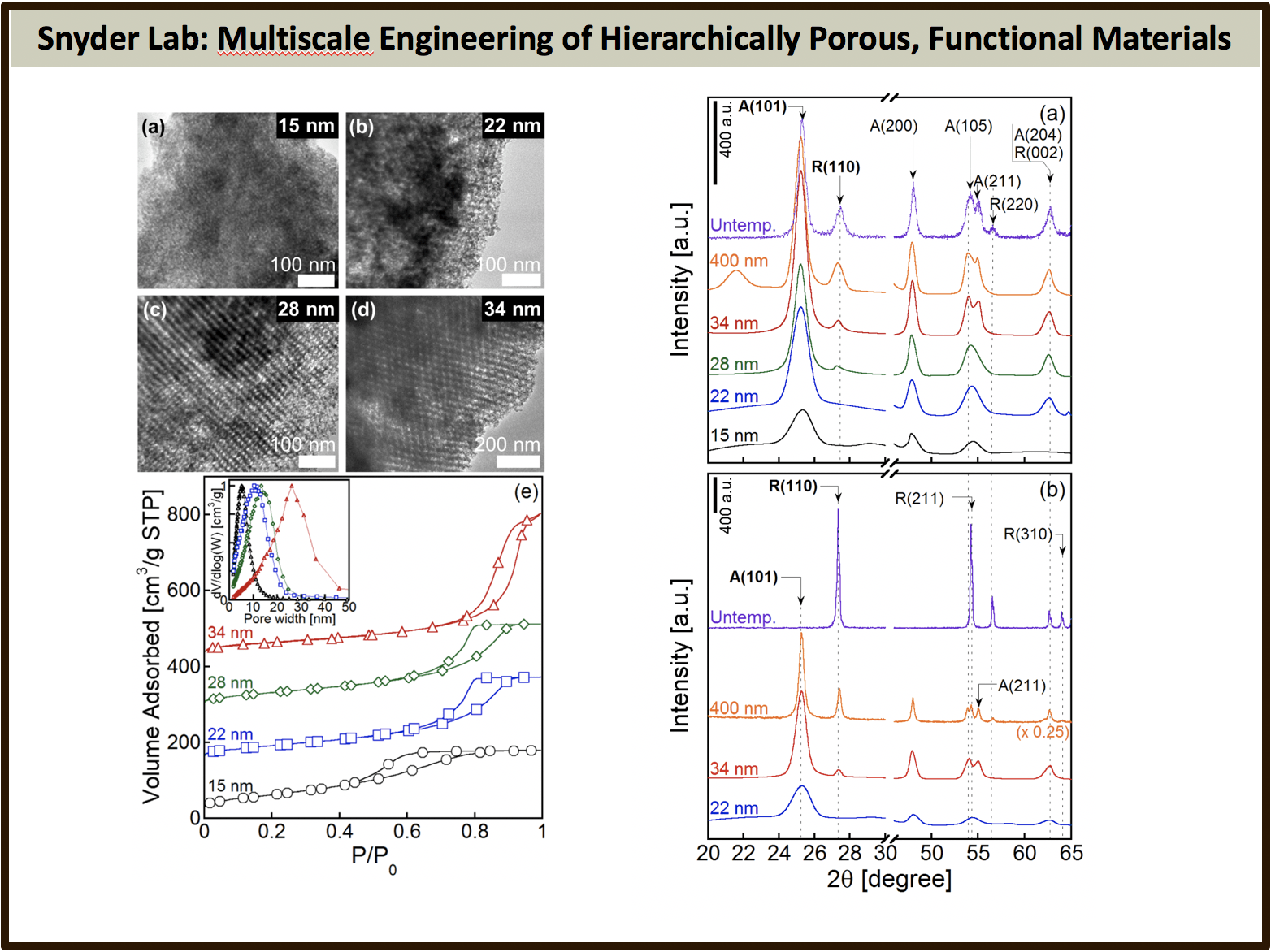Nanoparticle synthesis and multi-modal assembly: A facile route to hierarchically porous materials
The bottom-up synthesis of complex functional materials from a palette of particulate building blocks represents a Holy Grail for materials with potential applications spanning shape and size-selective catalysis, complex composites, energy storage, and beyond. Snyder’s group has established fundamental mechanistic insight into how multi-modal assembly of size-tuned silica nanoparticles can be employed as a facile route to hierarchically porous ordered mesoporous silicas (S.-C. Kung, Ph.D. ‘15). They continue to pursue strategies for extending structural diversity, achieved through, among other methods, DNA-based particle ‘flavoring’ (M. Song, Ph.D. ’16 w/ J. Mittal) and stress-driven relaxation during convective particle assembly (M. Joy, Ph.D. ’16 w/ J. Gilchrist). The Snyder lab commonly exploits nanoparticle crystalline assemblies as a sacrificial templating platform for structuring of a diversity of distinct porous replica phases (e.g., carbons, metal oxides, zeolites).
Template-mediated hierarchical structuring of porous carbon powders and structured thin films: Toward novel electrodes, high-flux membranes, selective adsorbents
The group routinely exploits the juxtaposition of the geometric simplicity of nanoparticle crystalline templates with the hierarchical complexity they cast in replica structures. Specifically, they have demonstrated templated synthesis of symmetric and asymmetric three-dimensionally ordered mesoporous (3DOm) carbon films (membranes) as well as novel bimodal and interdigitated-bimodal 3DOm (ib3DOm) structures. These methods have been proven by Z. Tian (Ph.D., 2014) and M. Sharma (Ph.D. student) to enhance surface areas, dramatically improve hierarchical pore size control and, thus, molecular accessibility, and enable independent replica microstructuring (e.g., carbon allotrope distribution) through template-mediate interfacial phenomena. This has translated into high-performance low-cost solar cell electrodes, potential to establish a new inorganic membrane paradigm for high-flux/high-selectivity molecular separations, and the ability to rationally tailor pore hierarchy and surface chemistry for selective, high-capacity adsorption (e.g., shown for biomass derivatives).
Structural and interfacial engineering of multi-functional catalytic materials
The Snyder group also endeavors to extend the multi-modal (structure/function) sacrificial templating platform to a broader materials palette. This effort has resulted in realization of hierarchically porous oxides (e.g., TiO2, ZrO2, and oxide/oxide systems) that display novel interface-mediated polymorph stabilization (D. Gregory, Ph.D. 2016), and siliceous (silicalite-1) and aluminosilicate (ZSM-5) zeolites. The work is linked by the common focus on 1) developing molecularly accessible mesoporosity and controlling pore topology within conventionally dense or purely microporous materials, and 2) leveraging template-replica or general interfacial interactions for engineering material properties so as to improve performance as it relates to transport resistances, catalytic activity, adsorption properties, and beyond.

